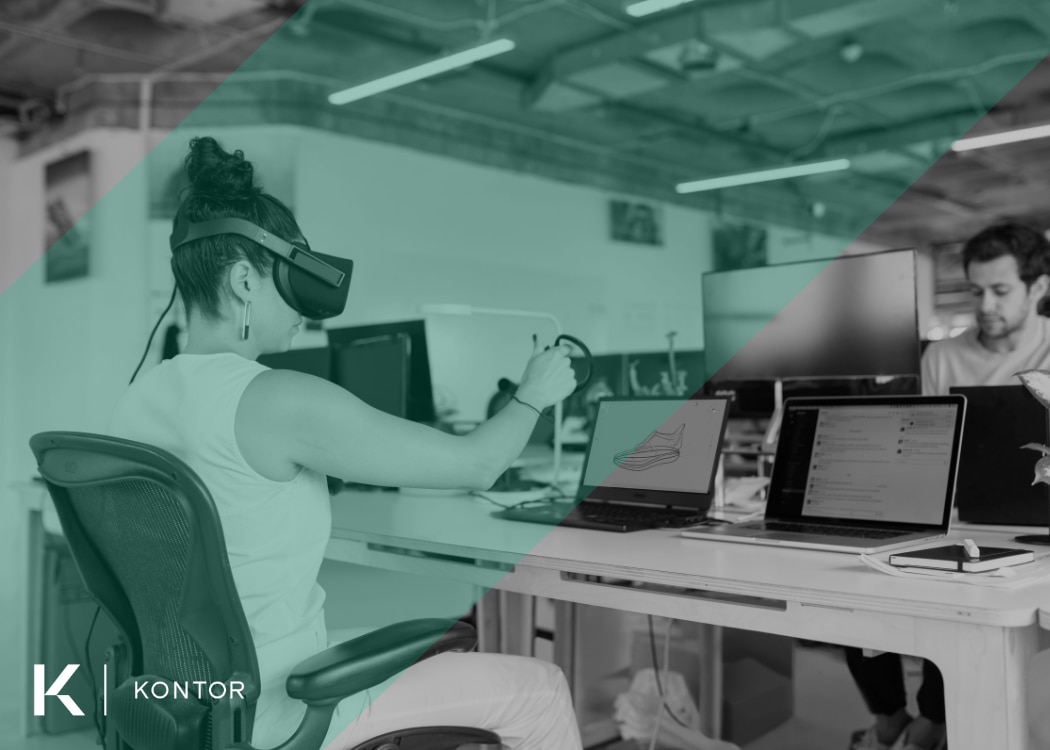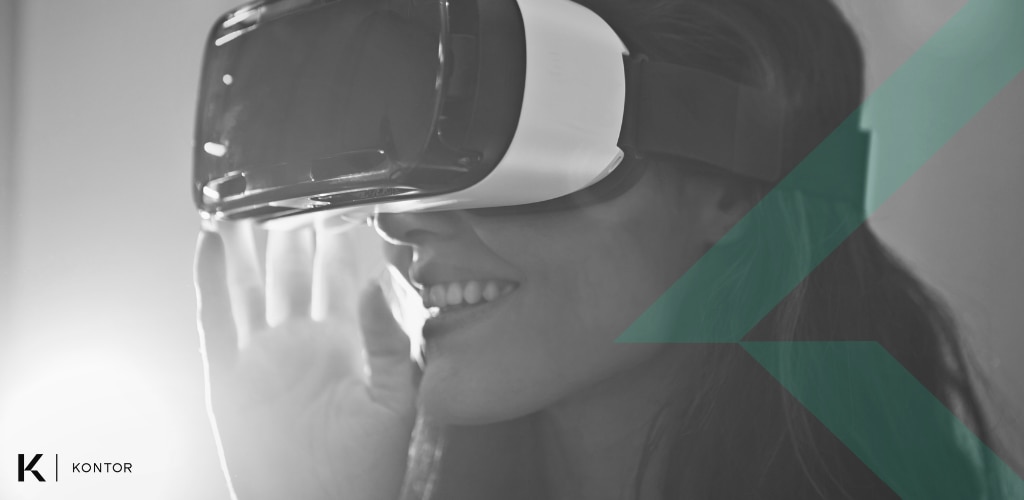What’s the difference between virtual reality, augmented reality, and mixed reality?

Extended reality (XR), the catch-all term for immersive technologies like virtual reality (VR), augmented reality (AR), and mixed reality (MR), has introduced dramatic shifts in business practices and consumer experiences alike. VR, AR, and MR offer distinct experiences with benefits spanning a variety of applications.
These technologies have unique attributes and provide businesses and consumers with several crucial benefits. Within a business, they can help revolutionize and improve both employee and customer experiences, blending digital content with real-life elements. At home, XR devices can provide entertainment in the form of a game or movie, help users get in shape via fitness applications, increase productivity, or help people improve their sleep.
In this blog, we’ll define what virtual reality, augmented reality, and mixed reality are as well as their distinctions. We will also share use cases to illustrate how each system is used.
— — — — —
Virtual reality (VR)

Virtual reality, shortened and referred to as ‘VR,’ fully immerses a user into a virtual setting. After donning the headset, users are placed in a digital world, blocking the physical world from their field of view. They’re empowered to navigate various locations and interact with objects, non-player characters, and other elements of the digital space. Virtual reality differs from augmented reality in that it does not rely on real-world elements.
VR content and software is predominantly accessed via a dedicated head-mounted display (HMD). Some VR headset manufacturers include hardware that enables high definition, full-color passthrough. Simply put, this means users will be able to see the physical world around them (when they choose to). Therefore, these VR headsets can also work as an AR and/or MR device (both augmented and mixed reality will be covered later in this blog).
Unique characteristics of VR
- Complete immersion: Users are fully immersed in a virtual environment with the physical world removed from the user’s view. The environment can be entirely fictional or based in real-world locations.
- Isolation: Virtual reality brings the user’s attention fully into the virtual world. By design, what the user sees, hears, and feels (via haptic feedback and other methods) is intended to be solely from the virtual environment, eliminating distractions from the outside world.
VR use cases
- In the manufacturing industry, VR is used to help train employees and evaluate their processes, creating opportunities for analysts to find areas where organizations can improve their current practices along the way.
- In the real estate industry, agents use VR to arrange virtual tours of properties, giving their customers the choice to experience a property without the need to be physically present.
- In healthcare, VR is used in children’s hospitals to help alleviate stress, pass time, provide comfort, and to transport children into virtual worlds outside of the hospitals they may be confined to.
If you’d like to read more about what VR is, its evolution, and its relation to other emerging technologies, check out our blog — What is virtual reality (VR)?
— — — — —
Augmented reality (AR)

Augmented reality, like VR, is simply referred to as ‘AR.’ AR overlays digital content on top of real-world objects. It augments how users view their environment by adding different digital elements. AR developers superimpose specific details, including 3D objects, text, and images, over what users see in their surroundings.
Typically, AR software is accessed using smart glasses, smartphones, tablets, wearables, and VR headsets equipped with passthrough functionality.
Unique characteristics of AR
- Partial overlay: Users can see and interact with their physical surroundings while viewing digital elements overlayed onto the actual environment around them.
- Enhances the real world: The primary focus of AR is to deliver information, context, or interactive elements to the user’s real-life environment — directions, instructions, infographics, data, and more.
- Contextual relevance: Using location, geographic orientation, and environment, AR devices actively display relevant virtual elements within the user’s field of view.
AR use cases
- In the architecture, engineering, and construction (AEC) industry, AR is used to plan projects and visualize where specific features or infrastructure are, or where they will be, within a building.
- Restaurants and cafes use augmented reality to display interactive menus via smart glasses or other AR devices. Guests learn about the menu, interacting with items that pique their interest. The restaurant can display key details including allergy information, calories, ingredients, pricing, and deals.
- In the tourism industry, national parks, cities, museums, and more use AR to enhance the experience of visitors by sharing overlayed context, content, guides, directions, and other useful information.
To to learn more about AR, its history, how it works, and use cases, read our blog — What is augmented reality (AR)?
— — — — —
Mixed reality (MR)

Photo by Microsoft | Learn.Microsoft.com
Like VR and AR, mixed reality is often shortened to ‘MR.’ Simply put, MR is a combination of AR and VR. MR is unique in that users can interact both with (real) physical objects in their environment and the virtual ones delivered through their equipment. Some MR devices deliver haptic feedback to the user via a controller or accessory, providing a tactile feeling for the user when they’re interacting with virtual objects. Dedicated MR devices have been created for a variety of tasks and applications across industries and many devices used primarily for AR and VR can also be used for MR.
Unique characteristics of MR
- Interaction of different elements: Physical and digital elements can interact within the bounds of mixed reality technology.
- Virtuality continuum: MR offers experiences that span a continuum from the purely physical environment to fully virtual worlds — meaning users can transition between environments that involve varying levels of virtual content integration. MR applications can be tailored to meet diverse needs, from light augmentation of the real world to highly immersive scenarios where the virtual content dominates the experience.
 Photo by the Interactive Design Foundation | Interaction-Design.org
Photo by the Interactive Design Foundation | Interaction-Design.org
MR use cases
- In professions requiring extensive training, MR makes supervision and mentorship possible from a distance. Inexperienced field technicians working on advanced technical equipment can have a mentor aiding from anywhere with a stable internet connection. Aid is more than just visual and auditory — both parties can see overlays of diagrams, how internal parts work together, needed tools, steps in a process, and more.
- In the automotive industry, automakers use MR to visualize and interact with virtual car designs at a 1:1 scale. From around the world, teams can interact with prototypes of entire vehicles or individual components as part of a collaborative, interactive, design and manufacturing process.
Read more about mixed reality, how it merges real and virtual worlds, benefits, and important consideration in our our blog — What is mixed reality (MR)?
— — — — —
Conclusion

Virtual reality (VR) fully immerses the user within a digital environment. Augmented reality (AR) keeps the user’s field of view in the physical environment while adding digital overlays. Mixed reality (MR) combines VR and AR, allowing users to interact with physical and digital content, within the same environment.
The brief definitions above are, of course, stated simply. These explanations and use cases only scratch the surface of how VR, AR, and MR are currently defined. As the XR landscape continues to develop, these definitions will shift, expanding to meet new technology as it’s developed.
— — — — —
About Kontor
Kontor is a premium accessories brand for virtual and augmented reality. We enable extended use times and less distractions from the physical world through accessories that deliver supreme wearability.
Our team was born out of ResMed, a leading medical device manufacturer that transforms care for people with sleep and breathing conditions. We have over 30 years of anthropometric design observation and expertise and uniquely understand facial geometry and skin science.
If you’d like to discuss partnering with Kontor, fill out our online contact form and we’ll be in touch.
To stay up to date with what Kontor is working on, sign up for notifications at the bottom of this page.
